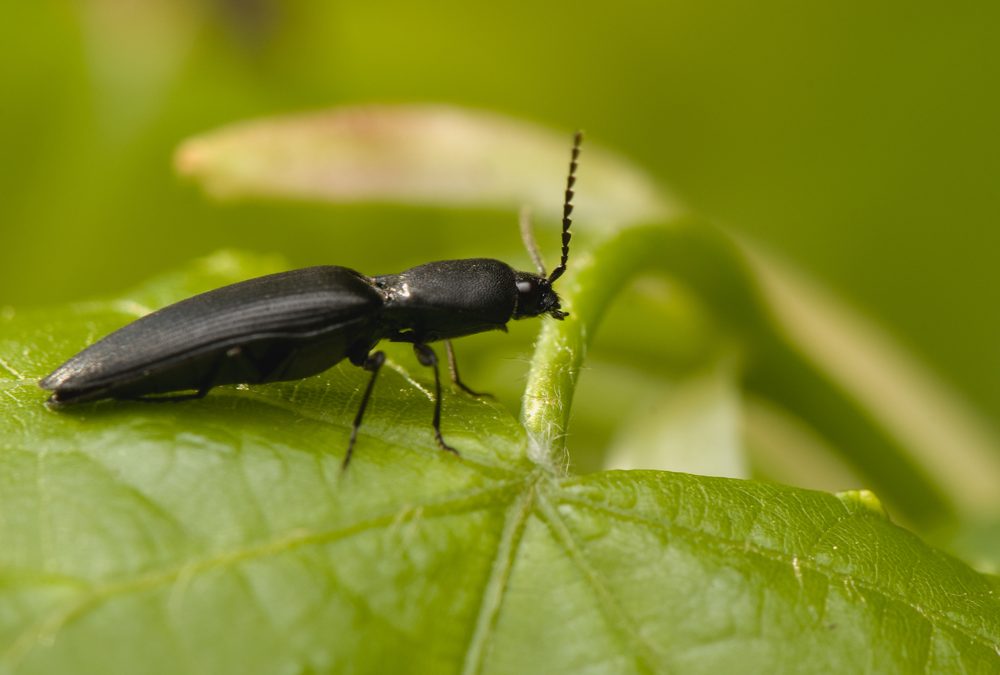The humidity of Coastal Carolina areas makes it a great environment for many pests that plague our homes. One such pest is the click beetle. Named for its distinctive sound, these scurrying beetles can be interesting to kids at the park… but a nuisance at home. They’re also called spring beetles, so keep an eye out for them as the weather starts to warm up.
Who Are They?
Click Beetles are fairly easy to spot. They are about ½-1 inch long and mostly of brown color. Some people may know them as “skipjacks.” There are over 900 distinct species of the click beetle.
Do They Hurt?
No. Click beetles might look nefarious, but they do not bite.
Why “Click” Beetle?
When the click beetle is threatened or is rolled onto its back, it uses its spine, thorax, and a few maneuvers to sharply arch its back and pop itself into the air to right itself. This vigorous motion creates the clicking noise that frightens so many!
What Do They Eat?
Click beetles mostly eat natural things like nectar, pollen, and roots.
Why Have They Come? (Signs of Infestation)
Click beetles are attracted to moist areas and at night are attracted to light. It is not uncommon to find them roaming around a bathroom, garage, or under leaves. Click Beetles are nocturnal, so a few seen during the daytime could signal a greater infestation.
How to Prevent Them
Most click beetles wander into your home either by accident or to escape the cold. Their guide is likely a bright light left on at night. Check all screens to make sure they are intact and seal any cracks or openings in the walls with caulk to fully seal off your house. Make sure the lights are off before you go to bed. If you see an individual click beetle, a quick sweep can move him back outdoors. If you find numerous adult beetles near sources of light or moisture, it’s time to call a professional pest controller.
Now that you know click beetles are fairly harmless and mostly a nuisance, don’t let them put a dampener on your festivities in the spring!


Recent Comments